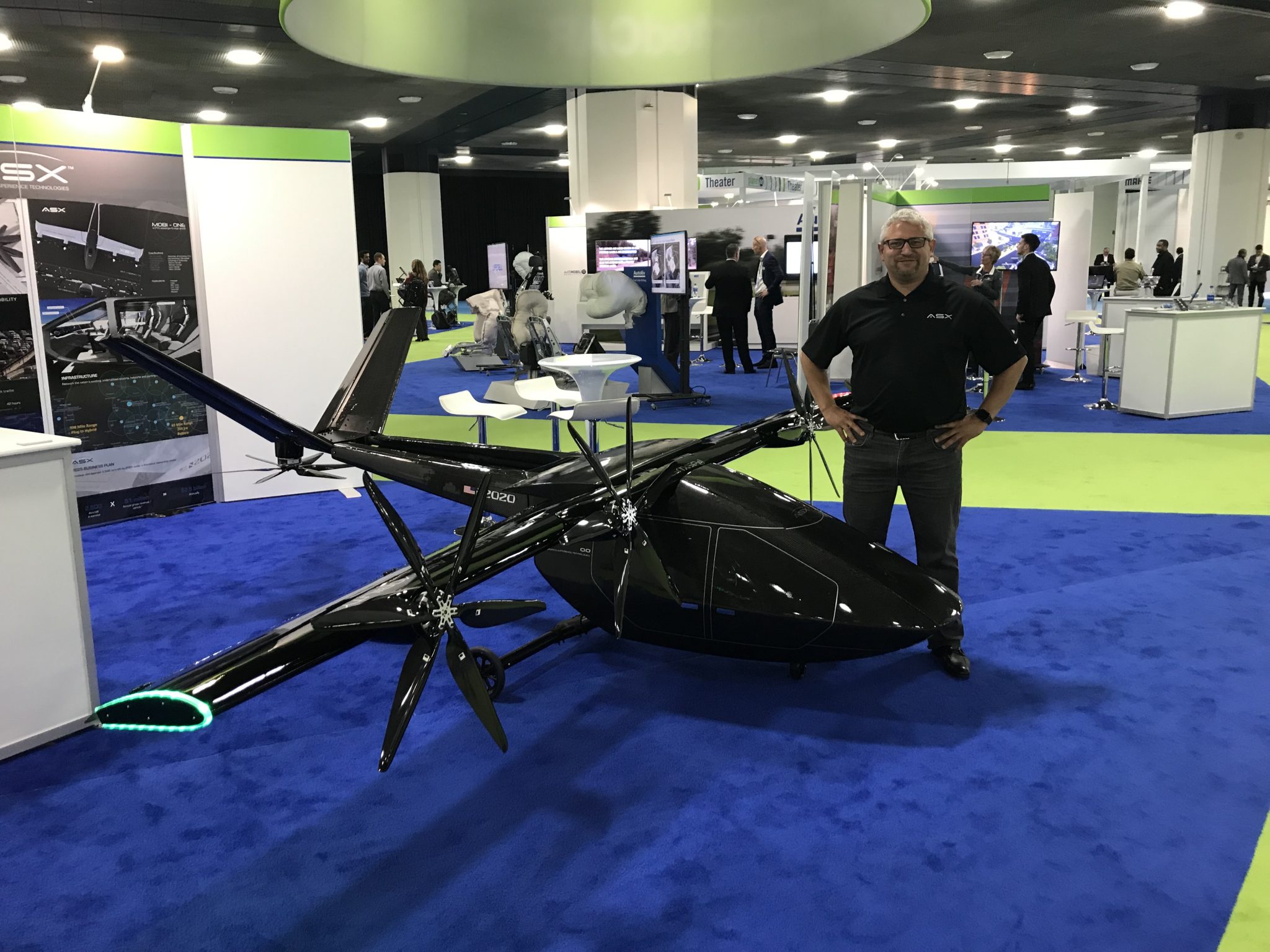The Flying Car is Getting Closer [VIDEO]
A Detroit businessman describes his vehicle as car parts that fly.

It’s 2019, and we still don’t have a flying car. But a Detroit company is developing perhaps the closest thing to it so far.
Jon Rimanelli founded Airspace Experience Technologies (ASX). He plans to launch a dual-propeller vehicle that could get off the ground, as it were, in 2024. It will have room for one pilot and four passengers. Its hybrid engine would have a range of up to 300 miles, while an electric model could fly up to 65 miles.
Rimanelli showed off a one-third scale model for reporters at the North American International Auto Show in Detroit. It resembles a giant drone aircraft. He says the full-scale version will give commuters another mobility option.
“The vehicle is designed to take off from heliports…and small community airports,” he says. He adds that the service would connect ride-sharing companies such as Uber and Lyft to more customers in more markets.
“Uber is working actively to build out what’s referred to as ‘skyports’,” Rimanelli says. “So from city centers and suburbs, you’ll be able to take an Uber or a Lyft to either the top of a parking structure or lot, and…fly to a major airport or to an adjacent suburb.”
No, it’s not a flying car.
Rather, Rimanelli describes it as car parts that fly. He says all of ASX’s electric motors and components are harvested from the automotive injury.
“We’re leveraging mass production techniques invented here in Detroit to basically make private air mobility affordable to the mass-traveling public,” he says.
ASX is based at the Coleman A. Young International Airport (formerly Detroit City Airport). Rimanelli employs about a dozen people now, but says he’ll need more in the next few years.
“Our objective is to build the first 2,500 aircraft by 2025,” he says. “So you’re looking at at least 1,000 employees.” That presents an opportunity for traditional auto workers who could be losing their factory jobs, especially those who assemble hybrid and electric vehicles.
“This is essentially going to be the same architecture as electric vehicle and hybrid technologies,” he says. “The only difference is it’s going to be, instead of wheels, we use propellers.”
Click on the audio player to hear the conversation with WDET’s Pat Batcheller.

